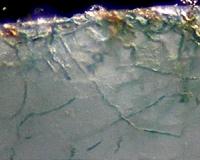| . |  |
. |
Helsinki (AFP) Dec 1, 2010 One in ten Finnish plants and animals is now threatened as climate change plays a role in speeding up extinctions, the Finnish environment ministry said Wednesday. "During the last ten years, the status of 186 species ... has improved, while that of 356 has deteriorated," the ministry said in a statement, adding that improvements were thanks to conservation efforts. Only a few dozen of the 2,247 species listed as threatened in Finland are also considered threatened on a global scale, the Finnish Environment Institute noted. "Nonetheless this is significant because it means that Finland's nature has rapidly changed a great deal... due to climate change," Environment Institute spokesman Heikki Toivonen told AFP. He said the increasing number of threatened bird species, for example, is a sign that migration to and from south of the Sahara Desert has become increasingly difficult as northern Africa has become drier and hotter. For example, the European turtle dove has been downgraded from vulnerable to critically endangered in Finland, while the ruff and the barred warbler, neither of which were in danger a decade ago, have jumped straight to the endangered list. "Global warming and milder winters have also caused a decline in mammals that have adapted to life in snowy and icy conditions, such as the mountain hare, wolverine and seals," the environment ministry said. Large mammals are also being threatened by deliberate or unintentional trapping and hunting, like the globally endangered Saimaa ringed seal, which sometimes gets caught and killed in fishing nets. Five species of mammals have become regionally extinct in the past decade, including the garden dormouse and the harbour porpoise.
Share This Article With Planet Earth
Related Links Darwin Today At TerraDaily.com
 Mystery Dissolves With Calcium Pump Discovery
Mystery Dissolves With Calcium Pump DiscoveryTempe AZ (SPX) Dec 01, 2010 Geo-microbiologists from Arizona State University have solved a long-standing conundrum about how some photosynthetic microorganisms, endolithic cyanobacteria, bore their way into limestone, sand grains, mussel shells, coral skeletons and other substrates composed of carbonate. According to the lead investigator, ASU professor Ferran Garcia-Pichel, the answer to the mystery of what is "at ... read more |
|
| The content herein, unless otherwise known to be public domain, are Copyright 1995-2010 - SpaceDaily. AFP and UPI Wire Stories are copyright Agence France-Presse and United Press International. ESA Portal Reports are copyright European Space Agency. All NASA sourced material is public domain. Additional copyrights may apply in whole or part to other bona fide parties. Advertising does not imply endorsement,agreement or approval of any opinions, statements or information provided by SpaceDaily on any Web page published or hosted by SpaceDaily. Privacy Statement |